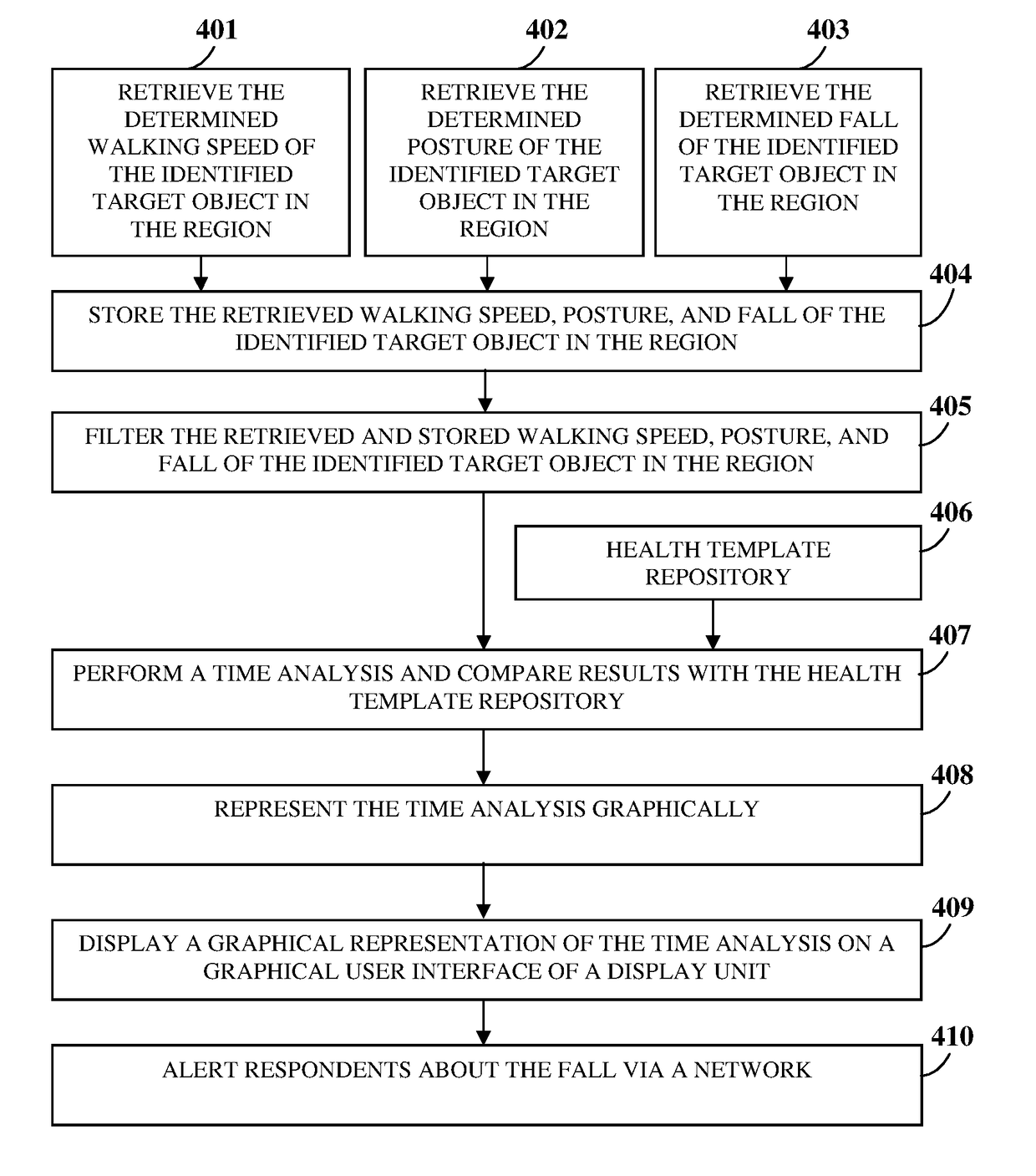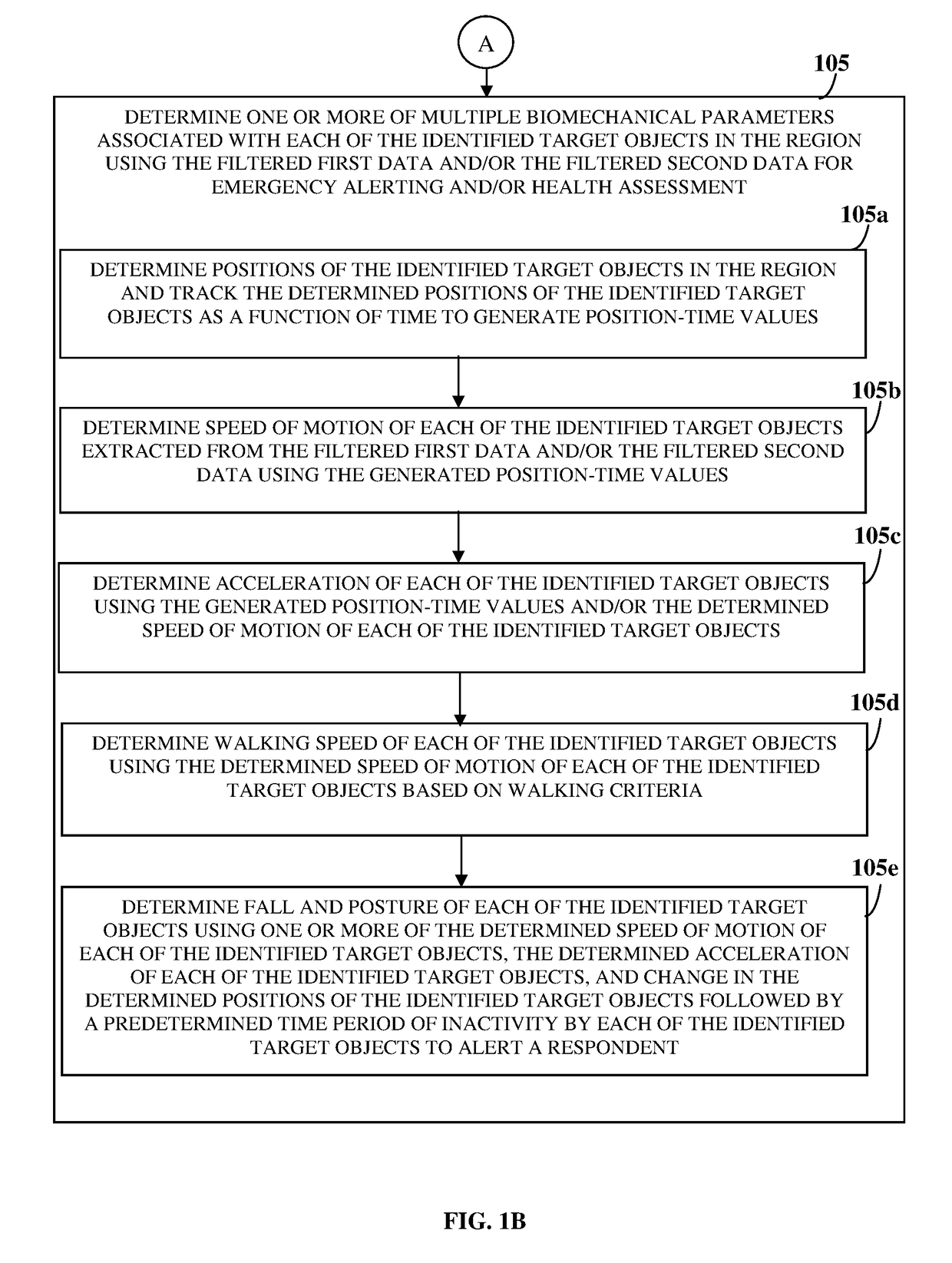Biomechanical Parameter Determination For Emergency Alerting And Health Assessment
a biomechanical and parameter technology, applied in the direction of alarms, instruments, etc., can solve the problems of inability to quickly respond to the needs of the elderly, significant challenges in the healthcare space, and lack of visibility regarding the well-being of the elderly
- Summary
- Abstract
- Description
- Claims
- Application Information
AI Technical Summary
Benefits of technology
Problems solved by technology
Method used
Image
Examples
Embodiment Construction
[0019]FIGS. 1A-1B illustrate a method for determining biomechanical parameters of one or more target objects in a region. As used herein, “biomechanical parameters” refer to elements related to structure, movements, and actions, for example, position, acceleration, speed of motion, fall, posture, etc., of a body part of a target object. Also, as used herein, “target objects” refers to entities, for example, humans such as elderly persons, etc., that are monitored by the biomechanical parameter determination system (BPDS) for determining their biomechanical parameters. Also, as used herein, the term “region” refers to a multidimensional space, for example, a two-dimensional space or a three-dimensional space occupied by one or more target objects and where different sensors of different types operate and communicate with the BPDS for detecting the target objects. A region is, for example, an area, a volume, or portion of a room, a living area, an outdoor area, a part of a community h...
PUM
 Login to View More
Login to View More Abstract
Description
Claims
Application Information
 Login to View More
Login to View More - R&D
- Intellectual Property
- Life Sciences
- Materials
- Tech Scout
- Unparalleled Data Quality
- Higher Quality Content
- 60% Fewer Hallucinations
Browse by: Latest US Patents, China's latest patents, Technical Efficacy Thesaurus, Application Domain, Technology Topic, Popular Technical Reports.
© 2025 PatSnap. All rights reserved.Legal|Privacy policy|Modern Slavery Act Transparency Statement|Sitemap|About US| Contact US: help@patsnap.com



